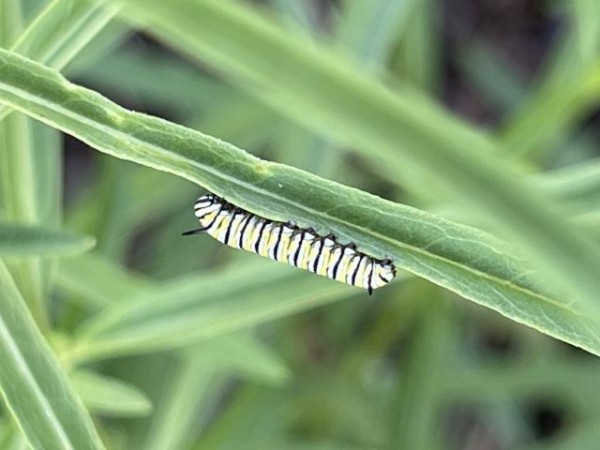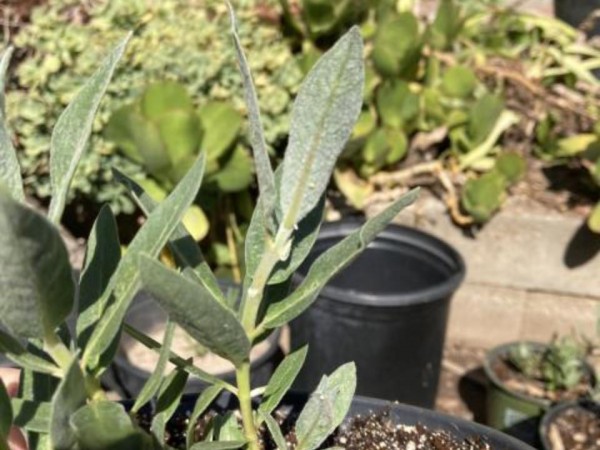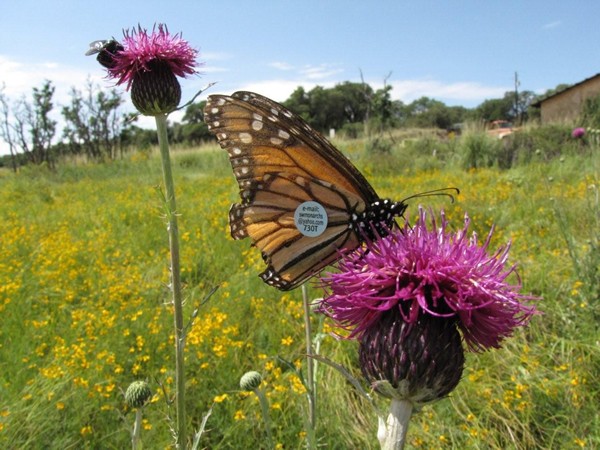Letter from Gail Morris: Western Monarch Spring 2022 Report #7
Published: 05/11/2022
Dear Western Monarch Friends,
Monarchs entered Utah for the first time this week and laid eggs as they continued their journey to summer breeding grounds. Southern California continues to report monarchs laying eggs and larvae filling milkweed in the region. New and fresh monarchs are beginning to appear, a harbinger of the new generation.
Western Monarch Sightings
This week had more reports of monarch immatures (eggs and larvae) than new adult monarchs. Here is a sample:
Effie in Pismo Beach, California reported one monarch on May 1. “Large Monarch, apparently female, laying eggs on milkweed in residential flower bed.”
Brian in Los Angeles found two monarch larvae on his milkweed on May 3. “Maybe second instar? About 10mm each.”
On May 5, Joey in St. George, Utah, saw a first of year monarch fly into his yard and explore the milkweed. “Found eggs on two separate patches of milkweed. Butterfly looked fresh, not tattered.”
Tim saw his first 8 eggs of the season in Los Angeles on the same day. “Spread over eriocarpa, fascicularis and californica [milkweed] plants.
Expanding their Range
Joey’s report of a female monarch laying eggs in St. George, Utah, on May 5 this week marks a new milestone as monarchs are now entering the state of Utah via Washington County for the very first time this season. Joey shared, “We had one start visiting on Saturday the 30th. And saw it again yesterday, May 5th. So far I have counted 7 eggs on our milkweed.” What kind of milkweed? “We have showy milkweed. It starting growing at the end of March. It bloomed this week. I didn’t get a photo of the butterfly- every time I tried it flew away. It looked fresh, not tattered.” But he did send in a photo of monarch eggs on Showy Milkweed.
Joey’s report of a fresh and new monarch indicates that a new generation is now eclosing and spreading its wings into new territory and nearing the summer breeding grounds. Be sure to keep an eye out for monarchs heading your way.
Send in your reports!
If you are lucky enough to see monarchs on their Spring Migration, be sure to report them to Journey North—whether they are adults or eggs or larvae. Provide as much information as you can such as weather conditions (it’s okay to estimate). Your detailed description of what you see can include, but is not limited to, the monarch’s gender and activity and, if known, the type of flowers if they are nectaring. If you can, observe the condition of the wings—fresh and new or worn and tattered or something in between. This helps us learn more about monarch age and survival. We realize it isn’t always possible, but please take a photo if you can. Thanks so much for your help.
Gail Morris is the Coordinator of the Southwest Monarch Study (www.swmonarchs.org), a Monarch Watch Conservation Specialist, and the Vice President of the Monarch Butterfly Fund, the Central Arizona Butterfly Association and the Western Monarch Advocates. The Western Monarch Population News is based on comments provided to Gail Morris. We hope to increase the number of sightings and therefore photos and comments entered into Journey North. We rely on the volunteers who communicate regularly with Gail and who agree to participate in our effort to increase awareness of the population of western Monarchs. You can reach her at gail@swmonarchs.org




